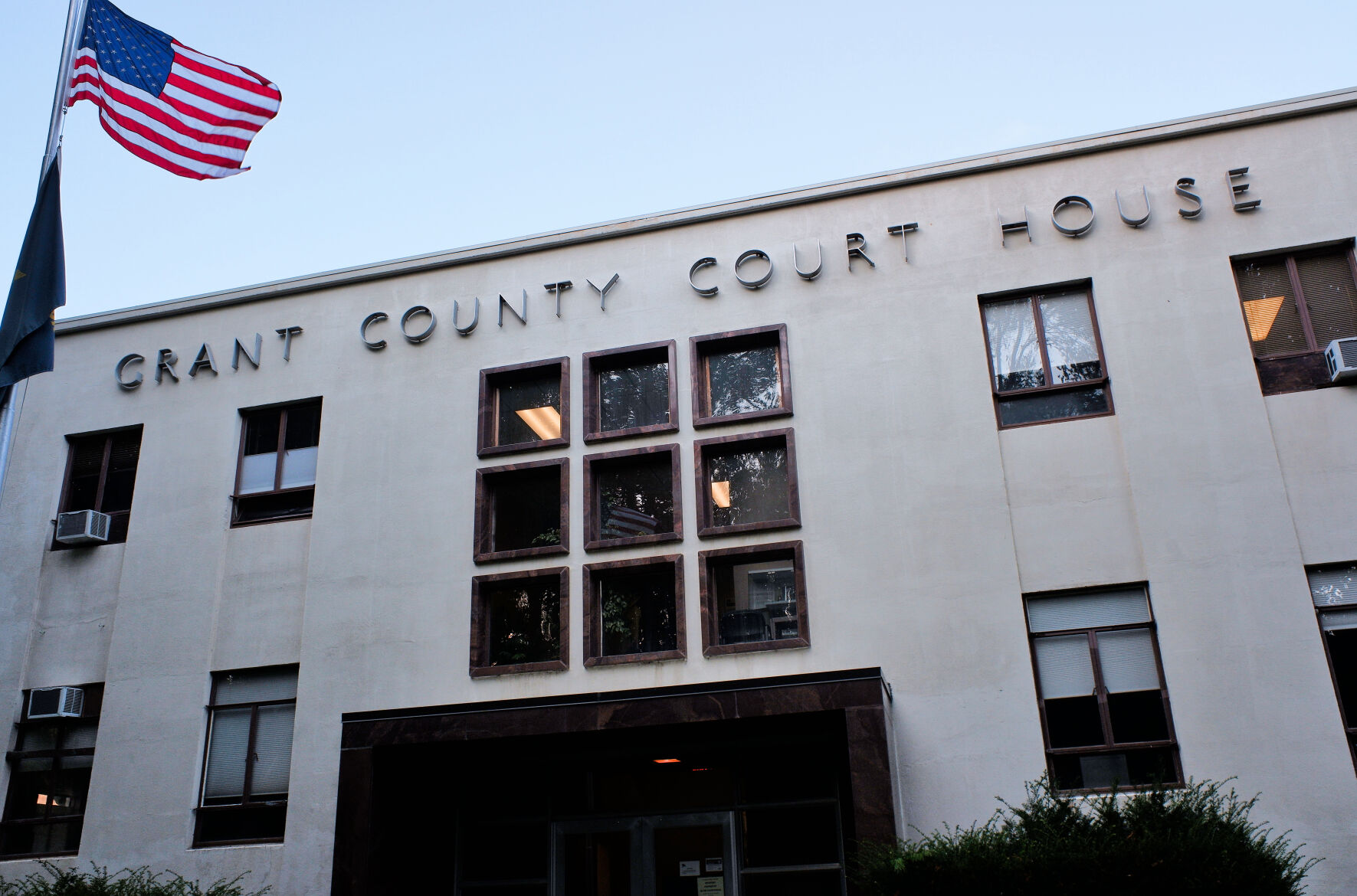The changing face of rural county fairs
Published 1:00 pm Tuesday, February 18, 2020

- Workers unload parts of a carnival ride from a Davis Amusement Cascadia trailer during setup for the Umatilla County Fair in August 2019.
Eating cotton candy. Riding the tilt-a-whirl. Trying to win a massive stuffed animal. For years, memories of most county fairs have been entwined with their carnivals, but that could be changing.
The company contracted to provide the carnival at last year’s Grant County Fair backed out at the last minute, and the fair has not yet found a replacement for this year. As of mid-January, at least eight other county fairs in Oregon were also without a carnival.
With carnival company closures and budget constraints, rural fairs of the future may create different memories for the next generation of fairgoers.
The situation
Grant County Fair Manager Mindy Winegar said the problem is more significant than just Grant County.
At this year’s Oregon Fair Association convention last month in Roseburg, Winegar said she met with managers from Lincoln, Baker, Harney, Union, Malheur, Wasco and Umatilla county fairs, all of whom were without a carnival, to find solutions.
Jefferson and Clatsop county fair officials also attended the meeting, and were both without carnivals at the time, but have since secured deals with carnival providers.
In Union County, Fairgrounds Manager Margaret Spence said this year will be the first year in over 30 years that the county’s fair will not have a carnival, and she’s not hopeful about the county having a carnival in future years.
She said the fair will take a big hit without the carnival, which provides a significant portion of the fair’s revenue. There is also a big piece of nostalgia that gets lost without the carnival, Spence said.
“At night, you would see the lights from the carnival from the freeway, and that is what would bring people out and keep them coming back,” she said. “The loss of a carnival will change the face of small county fairs as we know it.”
Carnival constraints
At the beginning of January, Umatilla County Fair’s longtime carnival provider, Davis Amusement Cascadia, announced it was closing.
CEO Michael J. Davis said the cost of operating rides is very high and the supply of qualified, motivated employees to operate those rides is very low — not to mention the cost of insuring the rides.
With high fuel costs to transport those rides in a big state like Oregon with long distances in between county fairs, it was extremely difficult for the 80-year-old family business to turn a profit, Davis said.
“It was always, and still is, a high-volume, low-return industry, which means you can generate and touch a lot of revenue, but you don’t get to keep a lot of that revenue because your expenses are really high,” Davis said.
Rural county fairs are small in attendance as it is, which makes it much more difficult to turn a profit, he said.
The ripple effect of Davis Amusement Cascadia’s closure put not just Umatilla County in a bind, but the eight other county fairs as well as carnivals shifted based on supply and demand.
Fair dates in Oregon are stacked on top of each other for most of the short fair season, requiring the small number of carnival operators to split into multiple units to cover every week, Winegar said.
It is difficult to find replacements because most of the carnival equipment is already scheduled and booked for the year, she said.
Davis said he fears this is the beginning of the end for carnivals at smaller county fairs. He thinks there will be fewer and fewer smaller carnival providers at rural county fairs each year until they are at a premium, and at that point, they will just go to urban county fairs with larger audiences.
A part of America is dying right before our eyes, he said, much like the circus did a few years ago.
“Everybody blamed the loss of the elephant, but that wasn’t it,” he said. “(The Ringling Brothers) were facing the same thing that (carnival providers) were on a different scale.”
Fair market
With or without a carnival, it is becoming harder and harder to draw people to the county fair.
“In the age of online shopping and digital convenience, fairs are challenged with drawing patrons out from behind their devices, in their air-conditioned environments and through our gates,” said Angie McNalley, general manager of Umatilla County Fairgrounds. “You’re not going to get that carnival experience online.”
The loss of a carnival also affects parents who attend, she said.
“For parents, the carnival occupies the kids, and without it, kids are going to get bored,” McNalley said. “Kids aren’t looking to buy jewelry and look at exhibits.”
While the fair brings school-age kids in 4-H and FFA who show animals, the goal is to attract others who may not be showing animals, and the loss of a carnival makes that next to impossible, McNalley said.
Gate revenues at the Grant County Fair were down by more than $1,000 last year without a carnival compared to previous years, according to budget documents, without even counting the loss of a share of the carnival revenue.
Fairs across the state scrape by, receiving just $53,000 annually in dedicated public funding from state lottery dollars, Winegar said.
It costs upwards of $100,000 to operate a fair each year, she said, without even addressing structural and maintenance costs at the fairgrounds.
Winegar said, although the fair also lowered the ticket price last year for children 10 and younger to make the fair more affordable, the loss of the carnival impacted attendance.
And even though Grant County will have alternate entertainment such as obstacle courses, bouncy houses and ax-throwing this year, she said it can’t replace the carnival.
The future
In the legislative short session this year, OFA planned to request an additional $25,000 in operating funds for each county fairgrounds statewide, Winegar said.
OFA President Bart Noll said that is a modest amount when factoring in for inflation.
Noll said OFA is also requesting funding for a $250,000 study to determine maintenance and structural work that needs to be done at county fairgrounds statewide.
“So far, we’re getting positive signals and we’re stepping up to the front of the line, and that is something we have not done in the past,” he said.
In urban areas, fairs are an essential part of the community, but in rural areas they are the focus, Noll said.
The ag foundation is stronger in rural areas too, especially for youth, Baker County Fairgrounds Manager Angie Turner said.
“(The fair’s ag tradition) is so good for the kids, to start something and see it through all year,” she said. “They raise those animals all year long and show them every year at the fair.”
Baker County didn’t lose its carnival in the recent shakeup. Turner said, except for 2018, the county has done without a carnival for the last 10 years, and the fair has been able to handle the financial impact to continue providing opportunities for kids.
With or without carnivals, fairs will always be around because the ag-based tradition of a rural county fair cannot be replaced with anything else, Winegar said.
“When I was growing up, (the fair) was always just the place you wanted to be — your friends, your family, everybody was there,” she said. “It is, and always has been, the event of the year in Grant County.”






